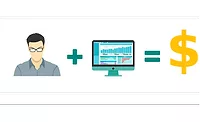Leverage the adaptability of IoT within your organization

When we look at the technology influences in the area of safety and security, in the past few years, IoT has emerged as a major market driver. As more and more connected devices are becoming smarter, an ever-increasing amount of data is being collected from a growing number of sensors. In particular, cameras as sensors are playing an important role due to their extensive capabilities in processing visual data.
Thanks to an increase in processing power and edge computing, IoT devices, such as smart surveillance cameras, can not only gather data but analyze as well - thus assisting in providing actionable intelligence for key decision-makers. The data gathered from these devices can provide guidance for Chief Security Officers (CSOs) and other C-Suite executives on how they can best optimize their facilities and make the most efficient use of space, while maintaining the health and physical safety of employees and visitors. With this in mind, let’s take a look at how CSOs can leverage the growing capabilities of IoT devices to strengthen organizational risk mitigation, support corporate digital transformation initiatives and increase the overall contributions of corporate security to an organization.
AI and machine learning are appearing in all sectors and verticals
While usage of Artificial Intelligence (AI) and machine learning were already increasing, the COVID-19 pandemic has brought the advantages of these technologies to the forefront for industries across the board. AI-enabled security cameras can make determinations about characteristics and other descriptive elements, in comparison to other people. This will be in addition to its ability to compare an individual to others already known to the system. Going beyond the ability to predict safe behavior, a machine-learning routine can gradually accumulate vast amounts of experience and data. In a retail setting, for example, this is highly valuable in terms of researching customer preferences and behaviors. AI helps systems to progress further in their ability to not only recognize actions, but also assess them and draw conclusions.
Increased computing power on devices reduces data transfer and storage
Growing capabilities and shrinking costs in IT technology have made it no longer necessary to upload all of the video data recorded by an IP camera to an on-premise video recording system, video storage or cloud-based system. This has become possible with edge computing, i.e. decentralized data processing at the edge of the network on the devices. As a result, multiple calculations and recognition steps are carried out on the camera itself, as well as on cooperating sensors. The resulting metadata is then transferred to the cloud and merged with the data from other cameras and other sensors using the much higher computing performance available there.
So how can enterprise level organizations take advantage of this vast amount of data information and turn it into actionable insights? Smart cameras can be essentially turned into multi-purpose sensors that can be flexibly equipped with apps, just like smartphones. These applications can be used in tandem and be flexibly equipped and reequipped to solve a variety of situations - including the early detection of smoke and fire, face mask detection, occupancy management, and traffic flow as well as reducing overall energy consumption.
AI-enabled smart cameras provide long-term, sustainable security
In a span of a few months, facilities around the globe found themselves facing a number of historic challenges - widespread closures, vacant office buildings, manufacturing facilities left scrambling to adjust to new restrictions. The list goes on and no industry has yet to emerge unscathed. Now, as businesses navigate safely reopening, one thing is clear: COVID-19 has proved to be a major catalyst causing businesses of all sizes to significantly change the way their work is conducted - showing a need for more sustainable technologies and solutions.
With this in mind, key decision-makers have the opportunities to evaluate existing infrastructure in such a way that can provide immediate benefits to employees and staff. One emerging area is the combination of IoT and security cameras.
What IoT is doing is revolutionizing the way we use surveillance cameras, much the way Android revolutionized smartphones. By enabling cameras to run different onboard applications, decision-makers can pick and choose appropriate camera analytics that produce actionable intelligence far beyond what traditional surveillance footage can provide. This enables security professionals to flexibly convert cameras for other application areas throughout their lifecycle, allowing them to get the most out of their hardware investment.
Flexibility allows for users to gain the most out of their IoT connected devices
As multiple applications can run simultaneously on one camera at a time, this means that a retailer, for example can have a variety of apps running on the camera that is monitoring people as they enter and exit the store’s main entrance. A single camera can count the number of customers who enter and detect the presence of facial coverings for pandemic-related requirements. The same camera can simultaneously analyze the actual number of shoppers who enter the store and their demographic information, such as, recognizing that a group of two adults and two children entering the store together is likely a family that intends to make a single purchase instead of four potential customers. This helps to maximize single store metrics such as conversion rates, or the percentage of customers who enter the store who actually complete a purchase when paired with a point of sale data.
If and when the need for occupancy management and face covering is no longer needed, the retailer can simply download a new app onto the camera for heat mapping and instead use it to more accurately assess what displays or specific merchandise are first attracting customers in the camera’s field of view.
Reduce insurance costs, optimize building space and increase employee wellbeing
Smart cameras can assist in the enforcement of health and safety policies, such as the wearing of proper face protection in offices, manufacturing facilities or public buildings. Using smart cameras equipped with object detection analytics, the appropriate personnel can be alerted to an individual entering a facility without a face covering, as well as determine the average number of people who violate this policy, allowing security professionals to identify problem areas and increase safety notifications where needed.
Data provided by devices assists security managers in organizing foot traffic, while adhering to social distancing and occupancy limits. At the same time, they can improve future building or lobby designs in terms of furniture placement or removal of obstructions that cause bottlenecking at the base of escalators, in stairwells or chokepoints at access points. Additionally, as many businesses are considering adopting a longer-term virtual workforce model, smart security camera applications can help facility managers evaluate building usage for space utilization and real estate decisions.
For commercial spaces, smart cameras can improve user experience by adapting air conditioning levels to room occupancy. By detecting how many people are in one location over a certain period of time, cameras can help control ventilation or heating. For basic facility maintenance and administrative help, they can provide assistance through identifying open work and meeting spaces with sufficient space for social distancing and assessing the cleanliness of each area or recording the last time the area had been sanitized. Finally, they are able to identify if conference room lights or devices have been left on, notify personnel of stock items needed in office break rooms and can provide early detection of flames, smoke or spills.
Smart cameras provide a powerful, data-rich sensor capable of capturing all types of information - offering security decision-makers actionable intelligence to assist in everyday security purposes, as well as the health and wellbeing of visitors and employees. The value of these IoT devices is that they can be used for a myriad of purposes, from mitigating the spread of COVID-19 and reducing energy usage, to providing perimeter security and optimizing building layout, providing benefits far beyond their traditional security usage.
Looking for a reprint of this article?
From high-res PDFs to custom plaques, order your copy today!







